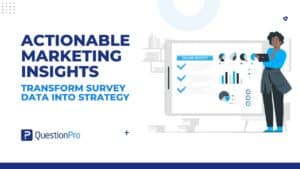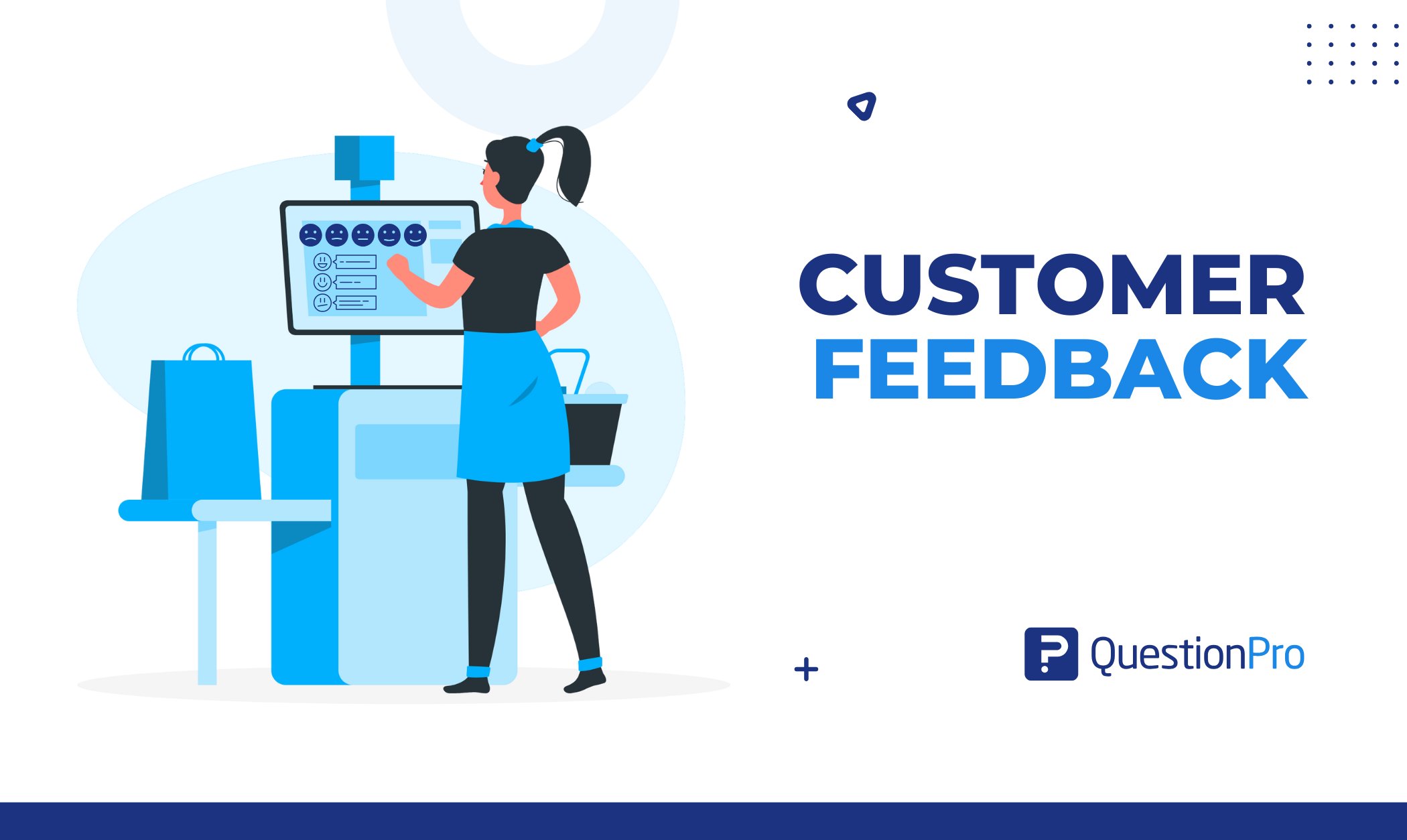
Customer feedback is like a mirror. It reflects how your customers perceive your business, products, and services. Collecting this feedback is essential if you want to improve, grow, and keep your customers happy. But how do you collect customer feedback effectively?
In this blog, we’ll explore what customer feedback really is, why it’s so important for your business, and how you can easily collect it to make your brand even better.
What is Customer Feedback?
Customer feedback is information customers share about their experience with your product, service, or brand. It includes opinions, suggestions, complaints, and compliments collected through surveys, reviews, interviews, support interactions, social channels, and in-product prompts.
Whether it’s a glowing compliment, a complaint, or an idea for improvement, customer feedback gives you insights into how well you’re meeting their needs.
Customer feedback is like a conversation between you and your customers. They tell you what’s working and what’s not, so you can make things better. You can collect feedback in many ways, like customer feedback surveys, reviews, social media comments, or even casual chats with customers.
Listening to and acting on customer feedback helps build trust, improve your business, and make customers feel valued. It’s the key to creating products and services that people truly love.
Why is Customer Feedback Important?
Collecting customer feedback is something like getting a roadmap for your business. It helps you understand what your customers love, what they hate, and what they wish you could do better.
Without their feedback, it’s hard to know if you’re on the right track or just guessing. Here’s why it matters:
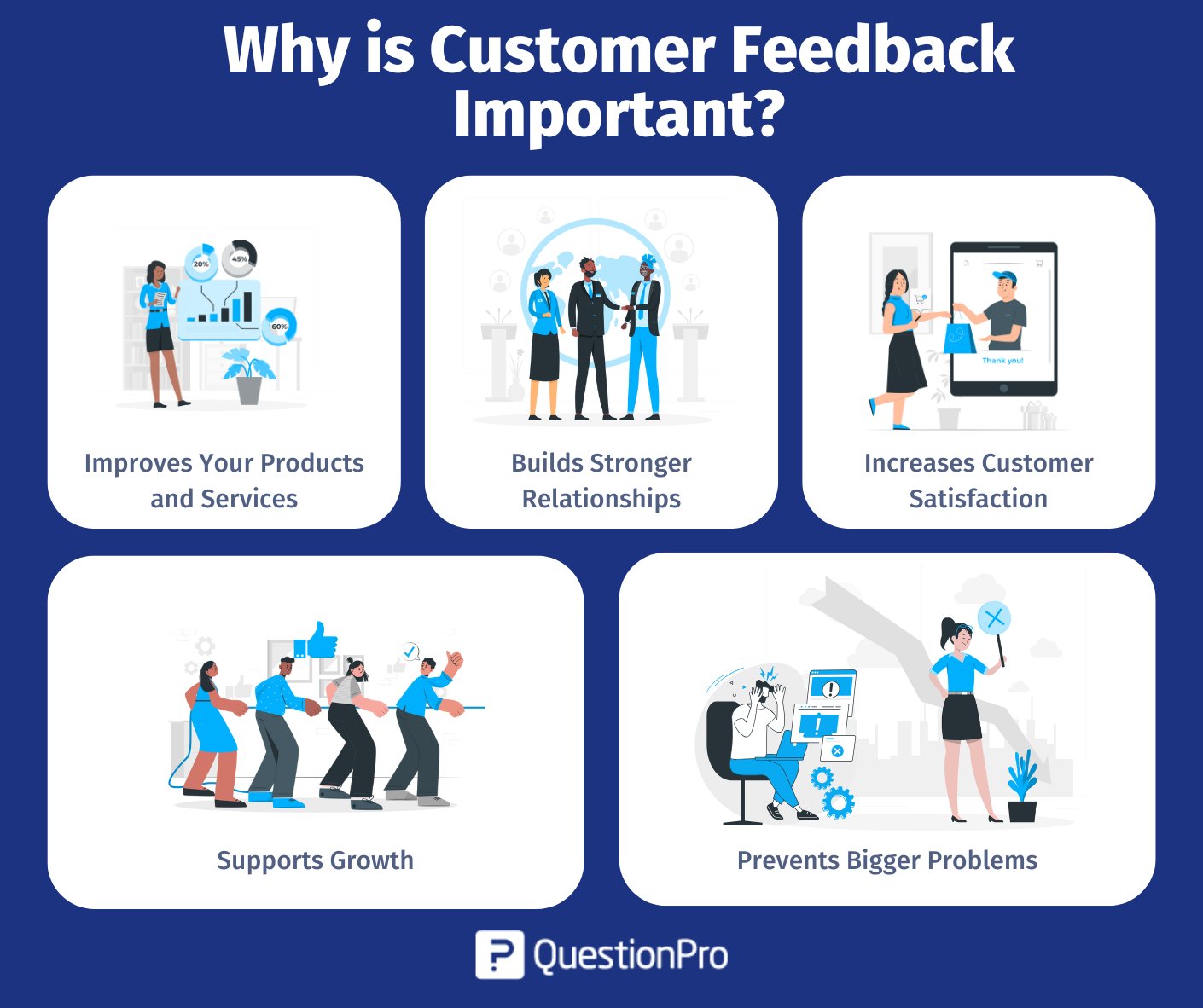
- Improves Your Products and Services
Feedback shows you what’s working and what’s not. If customers point out an issue, you can fix it. If they love something, you can build on it. This way, you’re always improving based on real needs.
- Builds Stronger Relationships
When you ask for feedback, it shows customers that their opinions matter. Listening to them and making changes based on their input helps build trust and loyalty.
- Increases Customer Satisfaction
There is a saying: Happy customers are key to success. Feedback helps you identify and address pain points so you can create better experiences and make customers feel valued and satisfied.
- Supports Growth
When you understand your customers’ needs, you can make better decisions for your business. This could mean offering new products, improving customer service, or refining your strategies.
- Prevents Bigger Problems
Feedback acts like an early warning system. It helps you spot small issues before they become big problems that could damage your reputation. It helps to build customer success.
Collecting customer feedback isn’t just about gathering opinions; it’s about listening, learning, and growing. When customers feel heard, they’re more likely to stick around, and that’s a win for everyone.
Types of Customer Feedback (by Source)
Customer feedback is a vital tool for any business. It’s how you learn what customers think about your products, services, or brand and how you can improve. Feedback can come in many forms, and each type has its unique benefits. Let’s explore some common types of customer feedback to help you better understand and serve your customers more effectively.
1. Customer Satisfaction Feedback
Customer satisfaction feedback is about how pleased your customers are with your product, service, or overall brand experience. It’s one of the most direct ways to understand if your offerings are meeting or exceeding customer expectations.
Satisfied customers are more likely to return and recommend your business to others, which can increase brand reputation and sales.
QuestionPro offers ready-to-use Customer Satisfaction Survey templates to help you gather valuable feedback with ease. Check it out today!
2. Sales Feedback
Sales feedback helps you understand how customers perceive your product or service in relation to its price and its value. It also offers insight into how well your sales team is performing and whether your marketing efforts are effective in boosting conversions.
3. Customer Service or Support Feedback
Customer service or support feedback is focused on the experiences customers have when they need help or assistance. This type of feedback is essential for evaluating the effectiveness and quality of your customer service team and identifying areas where improvements might be necessary.
A poor customer service experience can damage your brand reputation, while excellent support can turn unhappy customers into loyal brand advocates.
You can collect this feedback through post-support surveys, asking customers to rate their experience with support agents or the resolution process. Another way is by tracking the number of issues resolved, the speed of resolution, and customer satisfaction after an issue is closed.
4. Customer Preference Feedback
Customer preference feedback is about understanding what your customers like or dislike about your product or service. It provides information on their needs, habits, and expectations, which can guide product development, marketing, and customer experience enhancements.
Besides these, there is also demographic feedback, which includes collecting information about your customers’ characteristics, such as age, gender, and location. This type of feedback is important for segmenting your customer base and targeting your marketing efforts more effectively.
5. Reviews, Testimonials, Social & Community Feedback
Customer reviews on Google, G2, or Trustpilot and first-party testimonials provide social proof and concrete insights from real users.
Comments, DMs, and mentions across social media or in your owned community/forum provide unfiltered sentiment. Use social listening to track brand, product, and competitor mentions, and tag themes for trend analysis.
Prospects trust peer opinions, and recurring themes highlight what to fix or amplify.
6. Behavioral Signals
Analytics, funnel drop-offs, search-without-result logs, returns, and cancellation reasons are indirect feedback that reveal friction. Behavior shows what people do, even when they do not fill out a survey.
How to Collect Customer Feedback (9 Proven Methods)
Listening to your customers is one of the best ways to improve your business and build stronger relationships with them.
A well-thought-out feedback strategy helps you gather customer feedback and valuable insights, make informed decisions, and create a better experience for your customers. But how do you collect this feedback effectively? Let’s break it down into simple steps that anyone can follow.
1. Surveys and Questionnaires
One of the easiest and most direct ways to gather feedback is through customer feedback surveys or questionnaires. You can ask your customers specific questions about their experience with your product, service, or overall customer journey. Keep the questions short and to the point to make it easier for people to respond.
You can use surveys and questionnaires in email campaigns, on your website, or after a customer interaction.
QuestionPro Tip: Use both open-ended and close-ended questions. Close-ended questions like (Did you find what you were looking for?) are quick to answer, while open-ended questions (What could we improve?) give you more insight into customer thoughts.
2. Social Media Polls and Posts
Social media is a powerful tool for getting real-time feedback. Platforms like Instagram, Twitter, and Facebook allow you to post polls or ask questions directly to your followers. Since your customers already engage with you on social media, it’s an easy way to gather opinions and start conversations.
Instagram Stories, Facebook posts, or X polls are the best places for social media polls and posts. Make sure your polls or posts are engaging and fun while still asking meaningful questions. Keep it light but informative.
3. Customer Support Interactions
Your customer support team is likely to have the most direct conversations with your customers. After resolving an issue or answering a question, you can ask for feedback on the service provided. This gives you insight into customer satisfaction and where improvements might be needed.
Post-interaction surveys or follow-up emails are the best way to ask for feedback about customer support interactions. Make sure your feedback request is friendly and doesn’t feel like an added burden. A simple “How did we do?” question can go a long way.
4. Online Reviews and Testimonials
Encourage your customers to leave reviews on platforms like Google, Yelp, or Trustpilot. Not only does this provide you with valuable feedback, but it also helps build your brand’s reputation. Positive feedback can attract new customers, while negative feedback gives you the chance to improve.
Make it easy for customers to leave a review by providing direct links or offering a reminder email after a purchase or service. Respond to both positive and negative reviews to show that you care.
5. Focus Groups
Focus groups involve gathering a small group of customers to discuss their experiences with your product or service. This method provides more in-depth insights, as you can ask follow-up questions and explore their thoughts in detail. It’s a bit more involved, but it can offer great value for understanding customer needs.
Managing online focus groups is effortless with QuestionPro Communities. It gives you everything you need, like discussion boards, IdeaBoards, and panel management, to gather meaningful insights and make better decisions. It’s a smart, simple, and future-focused way to do research!
QuestionPro Tip: Keep the group small and make sure the participants are diverse to get a range of opinions. Make the session interactive and let participants feel comfortable sharing their honest thoughts.
6. Usability Tests
If you have a website, app, or any digital platform, usability testing is an excellent way to collect feedback. You can ask real customers to complete tasks while navigating your site or app and watch how they interact with it. This helps identify areas where users might be struggling.
Make the tests natural, not forced. Don’t guide them too much. Let them explore freely and observe their experience. Take notes on where they face challenges.
7. Net Promoter Score (NPS)
The Net Promoter Score (NPS) is a metric that measures customer loyalty and satisfaction. You ask customers one simple question:
“On a scale of 0 to 10, how likely are you to recommend our product to a friend or colleague?”
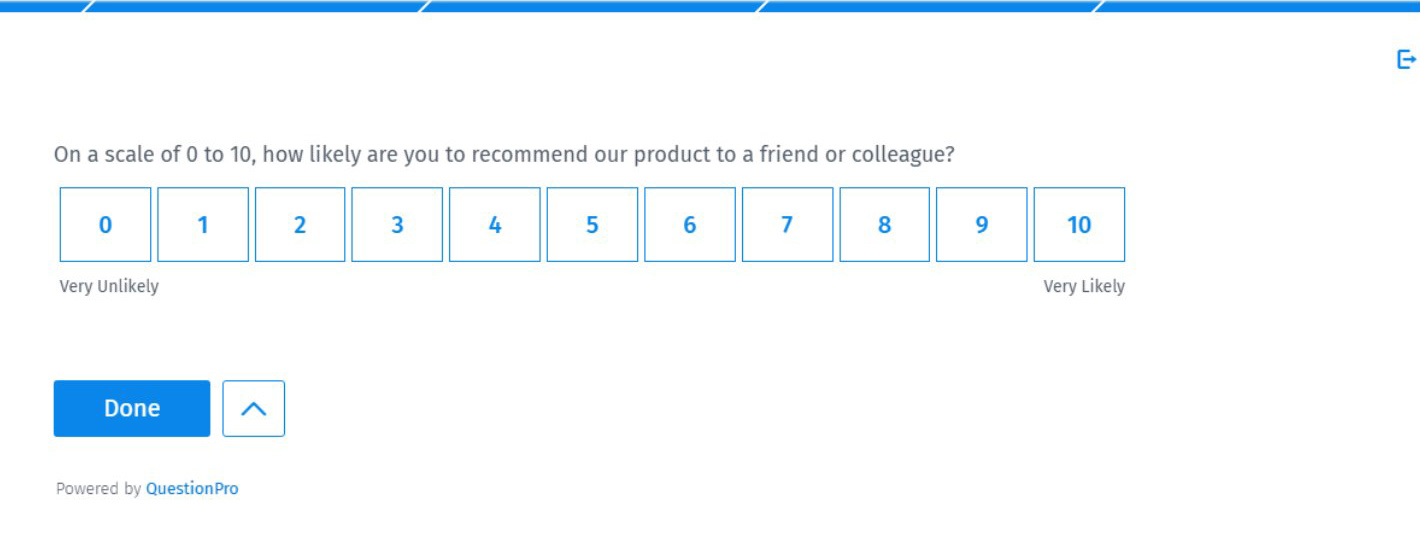
Based on their answers, you can segment them into promoters, passives, or detractors. This gives you a quick snapshot of overall customer satisfaction.
Include NPS in email surveys, post-purchase surveys, or after key customer interactions.
QuestionPro Tip: Ask this question periodically, not just after purchases, to understand customer satisfaction over time.
8. In-App Customer Feedback
If you offer an app, in-app feedback is a great way to collect real-time customer insights from your users. You can provide an option for users to rate their experience or share actionable feedback while using the app, making it seamless for them to express their opinions.
You can use in-app feedback inside your mobile app or platform. Don’t overwhelm users with feedback requests. Ask for their opinions at key moments, such as after a transaction or feature use.
9. Customer Interviews
Interviews are one of the best ways to gain in-depth insights into what your customers really think. They can help you uncover issues you might not have thought about. These one-on-one sessions allow you to dig deep into customers’ needs, pain points, and satisfaction levels.
Conduct customer interviews via phone calls, video chats, or in-person meetings for detailed insights.
QuestionPro Tip:Be a good listener. Let the customer talk and guide the conversation with open-ended questions. Make them feel comfortable sharing honest feedback.
Customer Feedback Metrics to Monitor
Track a small set of metrics consistently, segment them by customer type or plan, and tie each to a clear action. Here are the essentials:
- CSAT: Measures satisfaction after a specific moment, like checkout or support. Report a top-box rate or average score and trigger it right after the experience to keep answers fresh.
- NPS: Your loyalty pulse. Calculate % promoters minus % detractors and track the distribution over time. Always read the verbatim by segment to learn why scores moved.
- CES: Captures how easy it was for customers to get something done. Ask after support, returns, or cancellations. Trend it alongside Time to Resolution to spot friction.
- Churn and Retention: Monthly view of loss and stickiness. Use simple rates and capture stated churn reasons at exit so product and CX can act on the biggest drivers.
- Time to Resolution and First Contact Resolution: Speed and effectiveness of support. Aim to shorten TTR and raise FCR, then confirm the impact by watching CSAT and repeat contacts.
- Reviews Rating and Volume: Public sentiment and social proof across Google, app stores, G2, or Trustpilot. Track average rating, new reviews, response time, and tag common themes.
- Feature Adoption or Activation: Percent of eligible users who use a feature or hit a defined activation event. Compare cohorts and watch adoption after launches and onboarding changes.
- Close-the-Loop Rate: Execution on feedback. Track the percent of items actioned or customers updated. Publishing “shipped because of you” notes helps build trust and future response rates.
Explore Further: Best Customer Satisfaction Metrics to Measure Customer Happiness
Customer Feedback Strategy: Step-by-Step Plan
A customer feedback strategy is a plan that outlines how a business collects, analyzes, and uses feedback to improve its products, services, and overall customer experience. Instead of gathering feedback randomly, a strategy ensures consistency and maximizes the value of the insights you collect. Let’s break it down into simple, actionable steps.
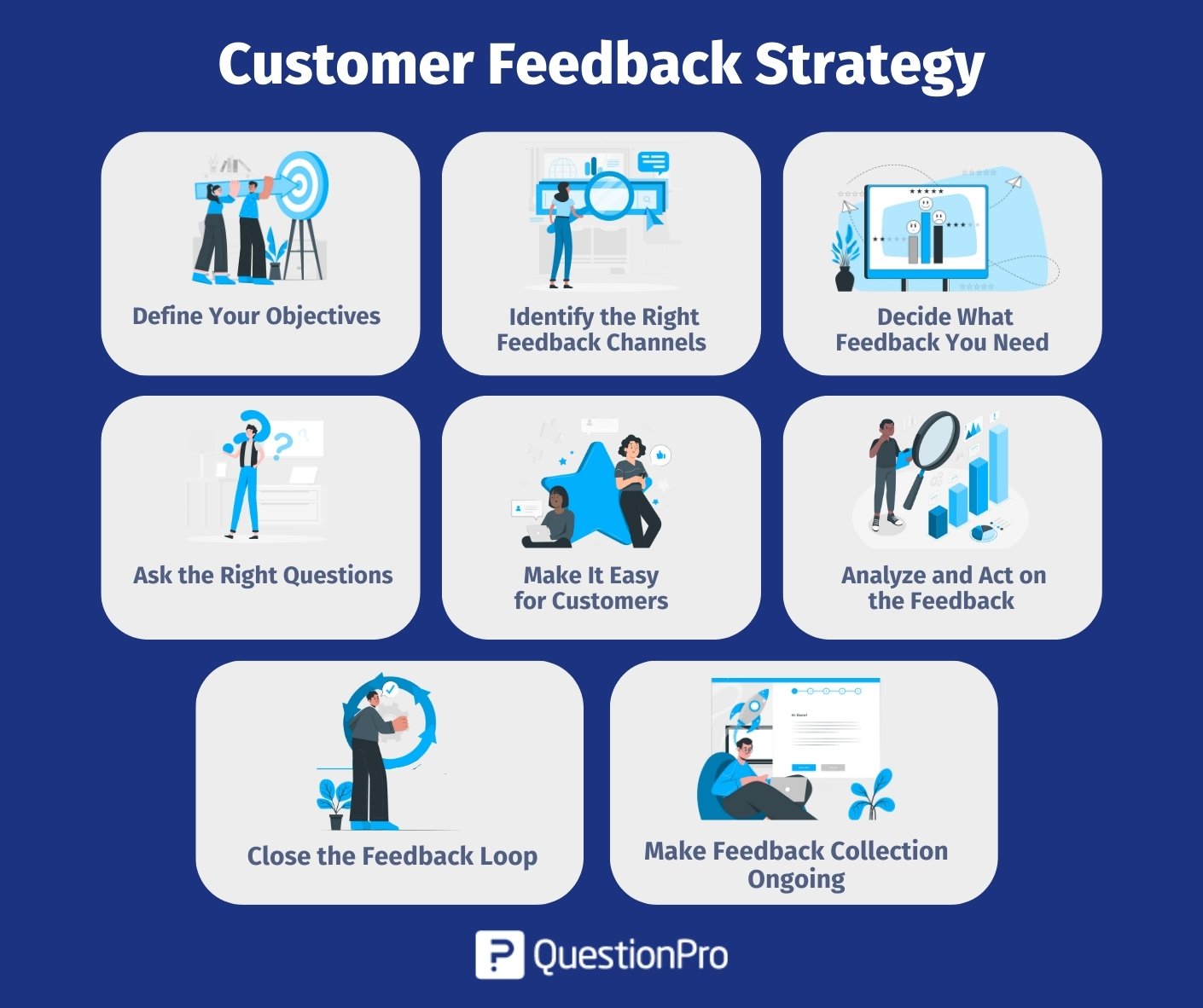
1. Define Your Objectives
Before you start collecting feedback, it’s crucial to understand why you’re doing it. What do you hope to achieve with the feedback you gather?
Here are some examples you can define as your objectives:
- Improve product or service quality.
- Increase customer satisfaction and loyalty.
- Identify pain points in the customer journey.
- Develop new products or features.
- Measure the effectiveness of marketing campaigns.
By clearly defining your goals, you’ll have a clear focus and know what type of feedback to gather.
2. Identify the Right Feedback Channels
Next, choose the most suitable channels for collecting feedback from your customers. Different methods will work for different types of businesses and customer segments. Consider where your customers spend their time and how they’re most comfortable communicating.
Here are some common feedback channels in which you can collect your feedback:
- Surveys and Questionnaires
- Social Media
- Customer Support Interactions
- Online Review
- Usability Tests
3. Decide What Type of Feedback You Need
It’s essential to know what kind of information you want to gather. Each type of feedback will give you insights into different aspects of your business. Some examples include:
- Customer Satisfaction Feedback: Understand how satisfied your customers are with your product or service.
- Customer Loyalty Metrics (NPS): Measure the likelihood of customers recommending your brand.
- Product Feedback: Gain insights into specific features or functions of your products.
- Customer Service Feedback: Learn how well your customer service team is handling issues.
- Demographic Information: Collect customer feedback data to segment customers and understand their behavior patterns better.
Choosing the right type of feedback ensures you gather the information that aligns with your business goals.
4. Ask the Right Questions
Once you’ve selected your channels and feedback types, it’s time to focus on the questions you’re asking. Make sure your questions are clear, relevant, and actionable. Avoid leading or confusing questions. Consider mixing both quantitative and qualitative questions:
- Quantitative feedback questions (rating scales) are useful for gathering measurable data.
- Qualitative feedback questions (open-ended questions) provide deeper insights into customers thoughts, emotions, and experiences.
Example questions:
- On a scale of 1-10, how satisfied are you with our product?
- What feature would you like to see added in the future?
- What could we have done better during your recent customer service experience?
- Can you share any challenges you faced while using our website?
5. Make It Easy and Convenient for Customers
For customers to give you feedback, they need to feel it’s easy and worthwhile. Keep your feedback process simple, quick, and convenient.
6. Analyze and Act on the Feedback
Once you’ve collected feedback, it’s time to analyze the results. Look for patterns and trends in the data to identify common themes, pain points, or opportunities.
- Quantitative data: Look for averages, percentages, and ratings that highlight areas needing attention.
- Qualitative data: Review open-ended responses to uncover deeper insights into your customer emotions and opinions.
Then, use the feedback to make informed decisions. Whether it’s improving a feature, revising your customer service approach, or addressing a common complaint, the key is to take action based on what your customers are telling you.
7. Close the Feedback Loop
One of the most important aspects of a customer feedback strategy is closing the loop. This means following up with customers after they’ve provided feedback to let them know that you’ve listened and taken their input seriously.
8. Make Feedback Collection Ongoing
Customer feedback shouldn’t be a one-time effort. It’s an ongoing process that requires regular attention. Set up a system where you continually collect feedback from customers throughout their journey with your business, not just after major interactions.
Customer Feedback Loop (ACAF: Ask, Categorize, Act, Follow up)
The Customer Feedback Loop is a simple yet powerful process that helps businesses truly listen to their customers and make meaningful improvements. It’s about turning customer feedback into action and showing them their voices matter.
Here’s how the customer feedback loop works:
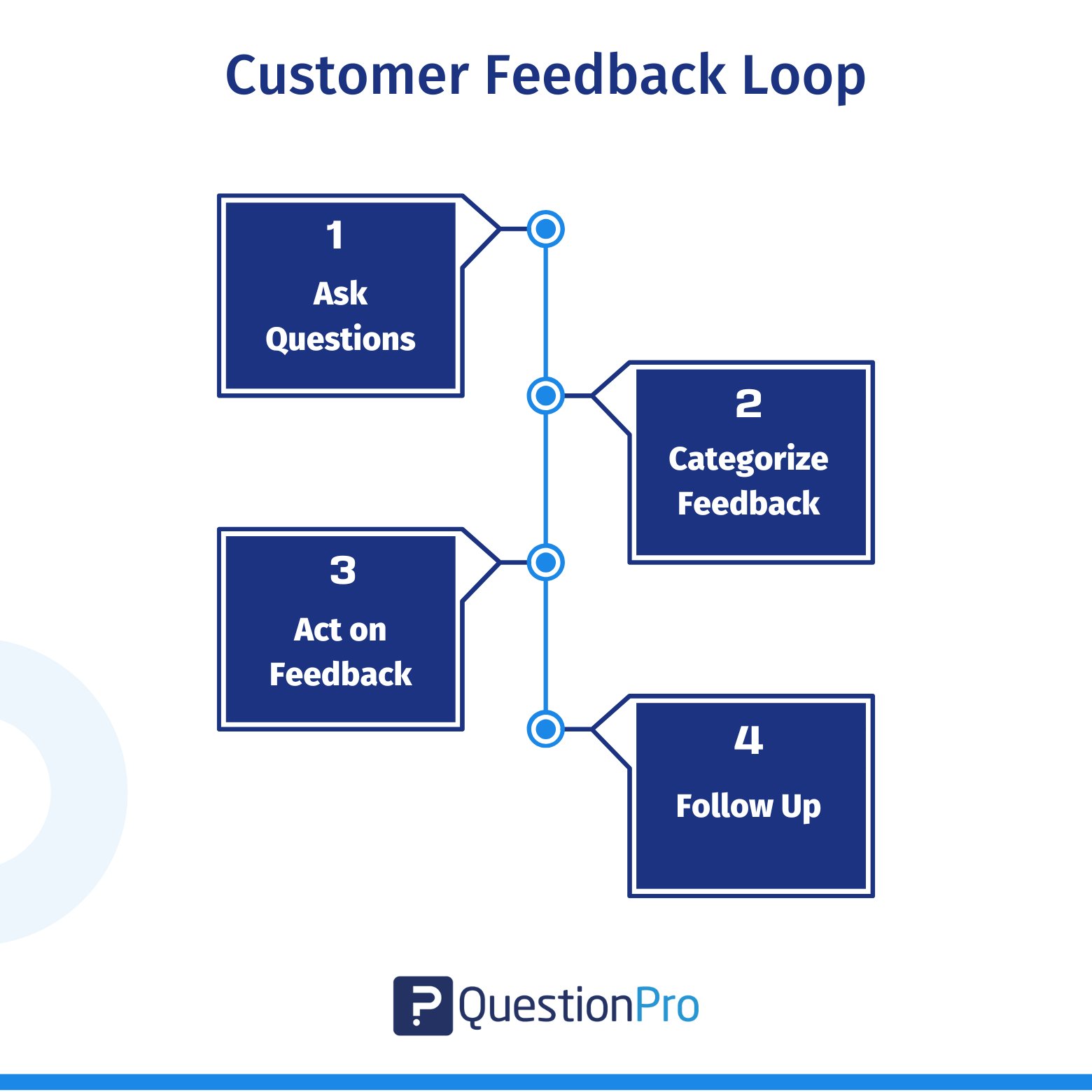
- Ask Questions
It all starts by reaching out to your customers and asking for their thoughts. Whether through surveys, reviews, or a quick chat, this step is about understanding what they like, what they don’t, and how you can do better.
- Categorize Feedback
Once you’ve gathered their feedback, it’s time to make sense of it. Group similar responses together, so you can focus on what matters most and tackle it efficiently.
- Act on Feedback
This is where the magic happens. Use those insights to improve. Fix what’s broken, enhance what’s working, and show your customers you’re listening by addressing their concerns.
- Follow-up
Finally, close the loop by getting back to your customers. Let them know what changes you’ve made because of their feedback. It’s a small gesture that builds trust and keeps the conversation going.
By following these steps, you not only improve your business but also create stronger relationships with your customers. After all, everyone loves to feel heard!
How QuestionPro Helps You Collect and Act on Feedback
QuestionPro is a powerful platform designed to help businesses collect, analyze, and act on customer feedback. Whether you’re gathering insights on customer satisfaction, product feedback, or service quality, QuestionPro provides a range of customer feedback tools and features to streamline the process. Here’s how it can help in collecting feedback:
1. Easy-to-Use Survey Creation
QuestionPro offers a user-friendly interface for creating surveys. Even if you don’t have any design or coding experience, you can quickly build customized surveys that suit your needs.
- Pre-built templates: Choose from industry-specific survey templates to speed up the process.
- Question types: QuestionPro offers 30+ types of questions, such as multiple choice, Likert scales, open-ended, etc.
- Custom Branding and Design: You can customize surveys with your logo, colors, and fonts to maintain a professional and consistent brand experience.
- Multiple Distribution Channels: You can choose multiple survey distribution options such as email, website embeds, social media, QR codes, etc.
2. Advanced Survey Logic and Branching
With QuestionPro, you can personalize surveys using features like skip logic, branching, and question randomization. This helps improve the accuracy and relevance of the feedback you collect, making the process more efficient and meaningful.
3. Automated Feedback Collection
QuestionPro offers automation features to collect feedback without needing constant manual effort. Set automated triggers to send surveys after specific events, such as a purchase, product use, or customer support interaction.
Also, if you need to gather feedback at regular intervals, such as quarterly or annually, you can set up recurring surveys to gather insights on an ongoing basis. Automation saves you time and ensures that feedback collection continues consistently without the need for manual intervention.
4. Analysis and Dashboards
When feedback starts flowing, you need a fast way to separate signal from noise and understand who is affected. QuestionPro surfaces live KPIs and the words behind them, so you can spot a spike, click into the verbatims, and see how it differs by plan, persona, region, or journey stage. Compare cohorts over time, find the drivers of change, and share a clear view with teams that need to act.
- Real-time dashboards for CSAT, NPS, CES, and key trends by segment.
- Text analytics with theme tagging and sentiment to surface drivers and blockers.
- Filters, crosstabs, and cohorts to compare plans, personas, and regions.
5. Act and Close the Customer Feedback Loop
Insights only matter when they turn into owned work and customer updates. With QuestionPro, you can alert the right team, assign a single owner, and track status from review to release. Customers see the impact through clear notifications, while your systems stay in sync through integrations that move work into the tools teams already use.
6. Communities and Qualitative Insight
When you need more than scores, build an ongoing space where customers can talk, co-create, and react in real time. QuestionPro Communities lets you recruit the right people, learn who they are, and bring them back for quick pulses or deeper studies. You get the context behind the numbers and a reliable group to validate ideas before you ship.
7. Data Quality and Governance
Good decisions start with clean data and clear controls. QuestionPro filters low-quality responses automatically and gives you the guardrails to manage access, privacy, and compliance. That means your dashboards reflect reality, and your team can work with confidence.
- Quality checks: Duplicate IPs, speeders, patterned answers, gibberish, one-word replies, and plagiarism flags.
- Access and audit: Role-based permissions, activity logs, and PII controls.
- Compliance basics: Consent capture, retention rules, and export options aligned with your policies.
Conclusion
Throughout this blog, we’ve explored what customer feedback is, why it’s so crucial for your business, and how to collect it through various methods like surveys, reviews, social media, and more.
By actively seeking out and listening to your customers, you can uncover valuable insights that help you refine your products, enhance customer satisfaction, and stay ahead of the competition. Remember, feedback isn’t a one-time thing; it’s an ongoing conversation that, when done right, leads to continuous improvement and growth.
So, whether it’s a compliment or a critique, embrace customer feedback as an opportunity to evolve. Start using these simple collection methods today, and watch your business transform by putting your customers’ voices at the heart of everything you do.
QuestionPro simplifies the process of collecting and acting on customer feedback by offering a wide range of tools to create surveys, distribute them, analyze the results, and integrate them with other business systems.
Also, QuestionPro provides the flexibility and features you need to gather meaningful insights that boost business growth. So, choose QuestionPro to elevate your feedback strategy and unlock actionable data that boosts growth.
Frequently Asked Questions (FAQs)
Answer: Feedback can be collected through surveys, reviews, online forms, social media, customer support interactions, or interviews.
Answer: Customer feedback plays a vital role in business growth by providing valuable insights into customer needs, preferences, and pain points. It helps businesses improve products and services, enhance customer satisfaction, and build loyalty, which leads to higher retention rates and repeat business.
Answer: It depends on the business, but regularly collecting feedback—monthly, quarterly, or after key interactions—ensures up-to-date insights.
Answer: Questions should be specific, clear, and targeted, such as satisfaction ratings, product usage questions, or open-ended questions for suggestions.
Answer: Closing the loop shows customers feedback is valued and used, which builds trust and encourages ongoing engagement.






